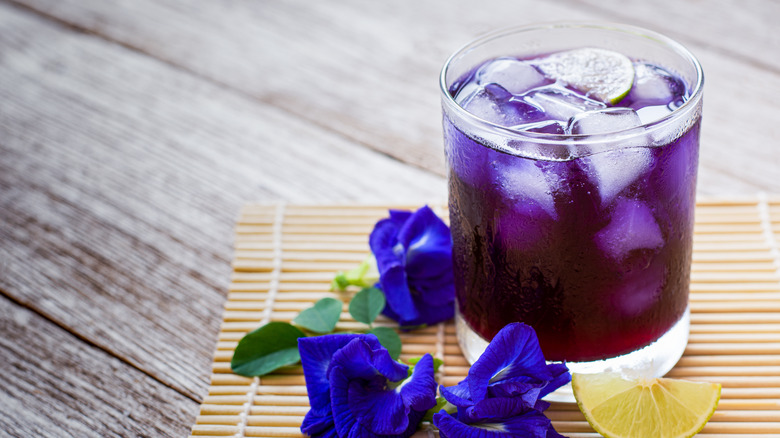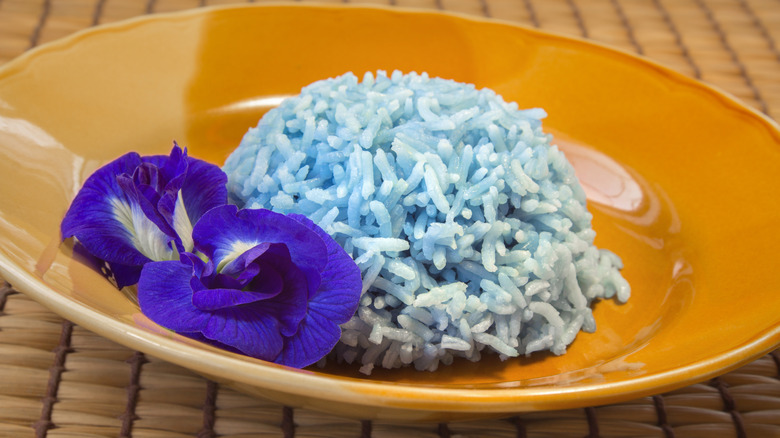What Makes Butterfly Pea Flower Tea Change Color?
We eat and drink with our eyes, so when you see the vibrant butterfly pea flower tea, you'll certainly want to take a sip. This unique flower, native to Southeast Asia, changes from a deep blue to purple when lemon juice is added to its brewed tea. What's the secret to the transformation? It's not baristas and bartenders deceiving you with food dye, but a transformation that occurs due to a change in pH levels.
We have to turn to science to break it down: The butterfly pea flower contains anthocyanins, which are the natural pigments that give the flower its deep blue-purple color. The flowers are harvested, dried, and turned into tea; it's normally brewed as a loose-leaf tea. After about 5-15 minutes of boiling in water, you'll have tea with a deep cobalt blue hue. However, when you add acidity to the tea, typically something like lemon or lime, the anthocyanins react to the change in pH. This causes the tea to shift to a violet hue.
The pH sensitivity can be manipulated with other ingredients, resulting in different colors. For example, adding something like baking soda, an alkaline ingredient, will create a green color — although, fair warning, this will not taste good. Adding in hibiscus flowers, which have a deep red color on their own, will result in an amplified, bright red color.
How is butterfly pea flower tea used?
The color is the focal point of butterfly pea flower tea, but the flavor must also be mentioned. Although the striking blue color conjures flavors of blue raspberry candy and the sweet Blue Curaçao liquor to mind, butterfly pea flower tea is nothing like this. It is rather mild, tasting earthy, grassy, and slightly reminiscent of green tea (although there is no caffeine present).
Before butterfly pea flower tea took off as the next trendy beverage in the Western world, it was first used in beverages and food throughout Southeast Asia. In Thailand, it is drank as a heavily sweetened tea with a touch of citrus, sometimes with lemongrass. It's also a popular way to give light-colored foods, like cakes, dumplings, and rice a blue color boost, especially in countries like Malaysia and Singapore.
Butterfly pea flower tea became so big that even Starbucks took note; the coffee mega-chain launched a butterfly pea lemonade cold brew drink in Southeast Asia in 2018. Now, this flower is a global ingredient, used by bartenders, chefs, and baristas throughout the world. Bartenders use the flower to make stunning color-changing cocktails, typically pairing with fresh flavors like lemon, tonic, lime, mint, and gin. Coffeeshops serve the tea on its own, or use it to add a purple hue to lattes and lemonades.

